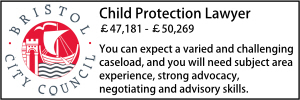Vice President of Court of Protection publishes guidance on judicial visits to 'P'
- Details
The Vice President of the Court of Protection has issued short practical guidance containing suggestions as to how the Court and practitioners “might ensure that meetings between the Judge and P, during proceedings, are conducted most effectively and enhance the participation of P”.
Mr Justice Hayden said the guidance – at P, Official Judicial Visits to (Guidance) [2022] EWCOP 5 – was intended to supplement, not replace, earlier guidance issued on 14 November 2016, by Charles J, as Vice President of the Court, and reissued at the end of his own guidance.
“That document was primarily directed towards Health and Welfare cases and provided some additional assistance to participation of P in Property and Affairs cases,” Mr Justice Hayden.
“It did not seek to address meetings between the Judge and P in Serious Medical Treatment (SMT) cases. In principle, there should be no reason why the approach in SMT cases should differ from other cases.”
Mr Justice Hayden said the two sets of guidance should be read together but he added one caveat. “Charles J did not and could not have anticipated the wholesale migration to video conferencing platforms that has characterised every aspect of professional and indeed private life in the last 20 months. His guidance should be read with these developments in mind.”
The Vice President noted that at the time of Charles J's guidance, visits by Tier 3 may have been less common, “though there are certainly a significant number of reported cases where this has occurred”.
He added: “In many Tier 3 cases the Court will be concerned with individuals in a compromised state of consciousness. Where P was unlikely to be conscious or unable to communicate effectively or at all (and where there were no available tools or strategies to promote this) a visit by the Judge was generally regarded as unlikely to yield any forensic value and perhaps even cause avoidable delay. The good sense of this is self-evident. Beyond this, it is unnecessary to say more."
The judge acknowledged that during the course of the pandemic, the Court of Protection had conducted proceedings 'remotely' and in a manner which, whilst not a substitute for an attended hearing, was widely agreed to have been effective. "Perhaps one of the most significant developments has been the realisation that the technology can be deployed to incorporate P into the court process in a more creative and flexible way than had hitherto been realised.
“Thus, Judges have made remote visits to Care Homes, Intensive Care Units, private homes, and a variety of other venues where it has been possible to meet with P. Additionally, P has frequently been able to attend remote hearings where attendance in a court room would not have been possible. The increased use of technology has undoubtedly made remotely conducted judicial visits to P, in SMT cases, far more achievable than was previously the case.”
Mr Justice Hayden stressed that a decision to visit P, either remotely or in person, would always be a matter for the individual Judge to determine.
The guidance was suggestive only, he added. “Neither is it intended to be a comprehensive checklist of the matters which need to be considered.”
The Vice President added that the guidance was not in any way to be taken as an indication that judicial visits would ordinarily be necessary. “In short, it is not constructed to be prescriptive. The Court of Protection is a highly fact-specific jurisdiction, its central philosophy which emphasises the individual, is resistant to rigid or prescriptive guidance.”
Mr Justice Hayden pointed out that many SMT cases would require an urgent hearing, counsel might be instructed on very short notice and a judge would have been allocated late in the day. Detailed consideration was unlikely to have been given to the possibility of P meeting the Judge.
“Nonetheless, thought should always focus on whether it is likely to be possible and/or potentially productive. In rare instances, a judicial visit may simply be driven by respect for P's dignity. Family members are sometimes eager for a Judge to see P even where there is no easily identifiable purpose. Sometimes, it will be neither more nor less than a signal of respect, which may enable family members to come to terms with a grave decision.”
The guidance goes on to set out the principles which would "invariably" apply to judicial visits. It also sets out that, in order to give effect to these principles and where the application is not made in an emergency, what the parties should provide the court.






























